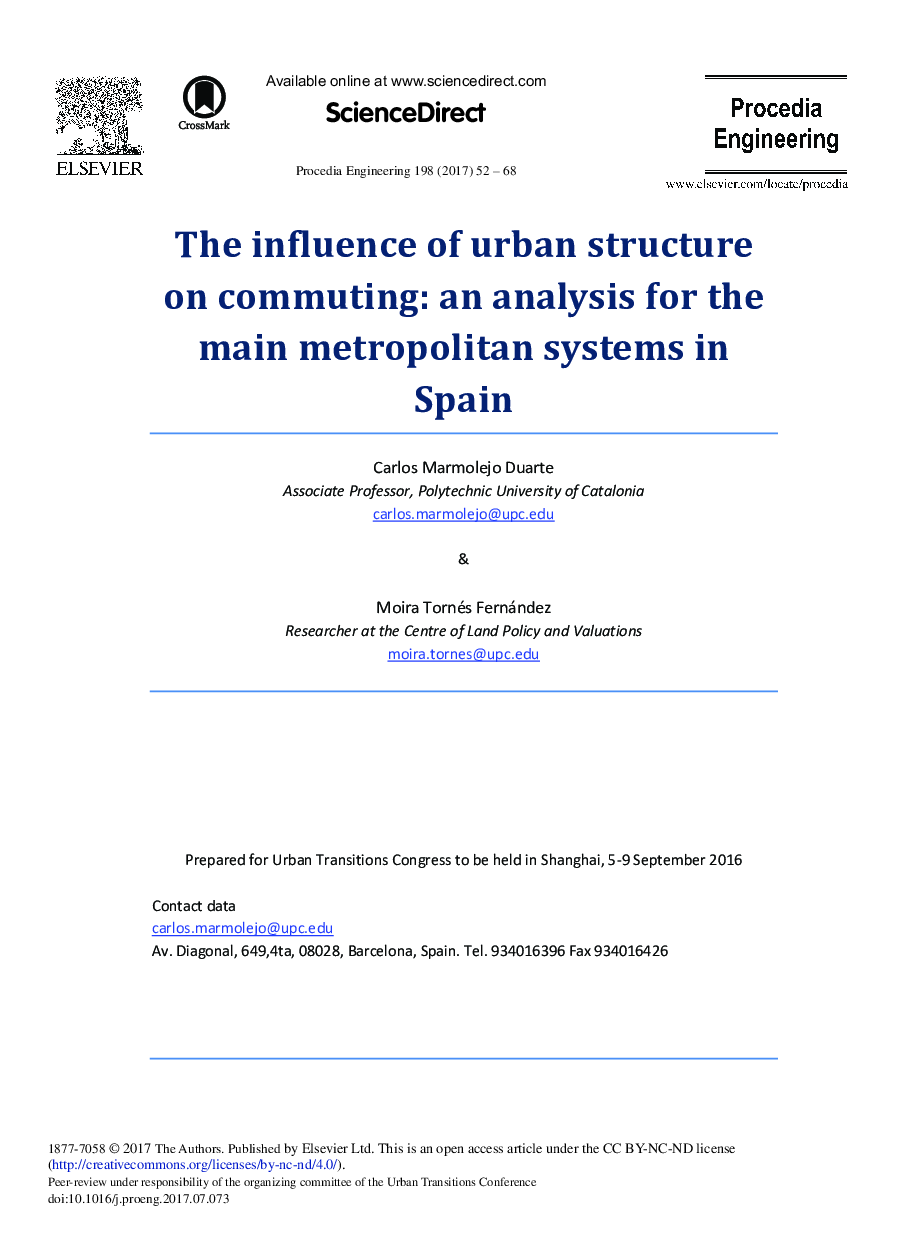| کد مقاله | کد نشریه | سال انتشار | مقاله انگلیسی | نسخه تمام متن |
|---|---|---|---|---|
| 5027376 | 1470628 | 2017 | 17 صفحه PDF | دانلود رایگان |

It is widely recognised that urban mobility is responsible for the generation of an important proportion greenhouse gasses produced by households, at the time that it has important social and economic implications for urban sustainability. Nonetheless, in the literature few attention has been placed on the relationship between urban structure and commuting. In this paper, using travel-to-work data for the main seven metropolitan systems in Spain we investigate both the impact of polycentric urban development on labour mobility and other urban factors influencing excess commuting. In doing so, a synthetic indicator of travelled distance is constructed and correlated to polynucleation and polycentricity indexes. Also an econometric family of models is built to regress excess commuting, after controlling for urban structure, over infrastructure and transport services, labour market structure, housing amenities, commuters' income level, orographic complexity. Results suggest that effectively there is an inverse relationship between the number and size of subcentres in terms of employment (polynucleation) and the distance travelled by commuters, nevertheless, such relationship is weaker with the strength of functional linkage between subcentres and their hinterland (polycentricity), which in turns suggest the presence of other factors influencing commuting. According to regression analyses, commuting is exacerbated in areas well served by private and high capacity public transport, also in zones where employment dominates over housing, especially if jobs are basically oriented to manufacturing. On the contrary, the diversification of housing typologies reduces labour mobility. In sum, urban structure and other planning-modifiable urban attributes seem to have and endogenous potential to mitigate commuting in metropolitan systems, and consequently contribute to reduce climate change.
Journal: Procedia Engineering - Volume 198, 2017, Pages 52-68